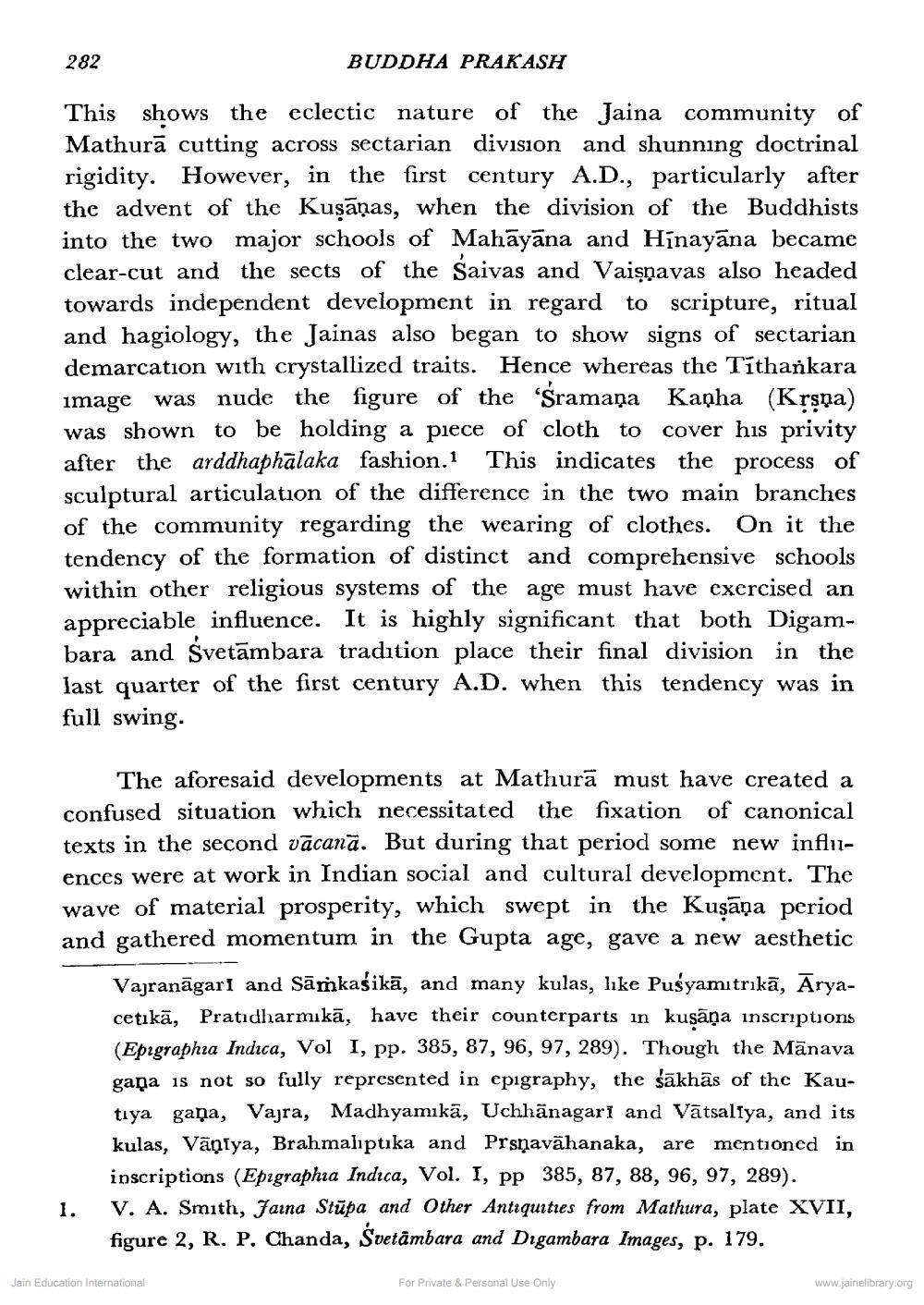________________
282
This shows the eclectic nature of the Jaina community of Mathura cutting across sectarian division and shunning doctrinal rigidity. However, in the first century A.D., particularly after the advent of the Kuṣāņas, when the division of the Buddhists into the two major schools of Mahāyāna and Hinayana became clear-cut and the sects of the Saivas and Vaisnavas also headed towards independent development in regard to scripture, ritual and hagiology, the Jainas also began to show signs of sectarian demarcation with crystallized traits. Hence whereas the Títhankara
BUDDHA PRAKASH
image was nude the figure of the 'Sramaņa Kapha (Kṛṣṇa) was shown to be holding a piece of cloth to cover his privity
after the arddhaphalaka fashion.1 This indicates the process of sculptural articulation of the difference in the two main branches of the community regarding the wearing of clothes. On it the tendency of the formation of distinct and comprehensive schools within other religious systems of the age must have exercised an appreciable influence. It is highly significant that both Digambara and Svetambara tradition place their final division in the last quarter of the first century A.D. when this tendency was in full swing.
The aforesaid developments at Mathura must have created a confused situation which necessitated the fixation of canonical texts in the second vācană. But during that period some new influences were at work in Indian social and cultural development. The wave of material prosperity, which swept in the Kuṣāņa period and gathered momentum in the Gupta age, gave a new aesthetic
1.
Vajranagari and Sāṁkaśikā, and many kulas, like Puśyamitrikā, Āryacetika, Pratidharmikā, have their counterparts in kuṣāņa inscriptions (Epigraphia Indica, Vol I, pp. 385, 87, 96, 97, 289). Though the Manava gana is not so fully represented in epigraphy, the sakhas of the Kautiya gana, Vajra, Madhyamikā, Uchhänagari and Vatsaliya, and its kulas, Vāņiya, Brahmalıptıka and Prṣṇavahanaka, are mentioned in inscriptions (Epigraphia Indica, Vol. I, pp 385, 87, 88, 96, 97, 289).
V. A. Smith, Jaina Stupa and Other Antiquities from Mathura, plate XVII, figure 2, R. P. Chanda, Śvetāmbara and Digambara Images, p. 179.
Jain Education International
For Private Personal Use Only
www.jainelibrary.org




